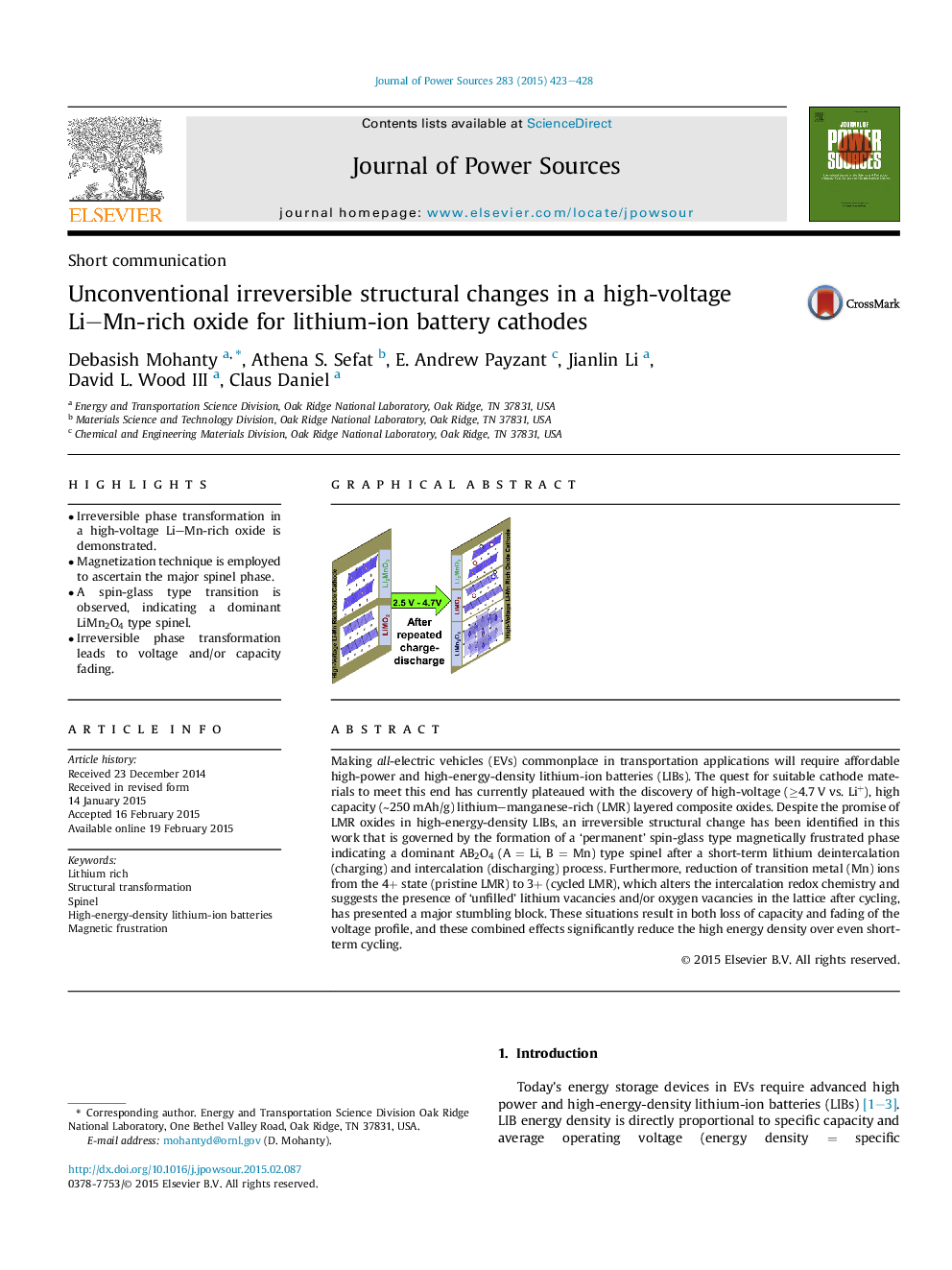| Article ID | Journal | Published Year | Pages | File Type |
|---|---|---|---|---|
| 1292863 | Journal of Power Sources | 2015 | 6 Pages |
•Irreversible phase transformation in a high-voltage Li–Mn-rich oxide is demonstrated.•Magnetization technique is employed to ascertain the major spinel phase.•A spin-glass type transition is observed, indicating a dominant LiMn2O4 type spinel.•Irreversible phase transformation leads to voltage and/or capacity fading.
Making all-electric vehicles (EVs) commonplace in transportation applications will require affordable high-power and high-energy-density lithium-ion batteries (LIBs). The quest for suitable cathode materials to meet this end has currently plateaued with the discovery of high-voltage (≥4.7 V vs. Li+), high capacity (∼250 mAh/g) lithium–manganese-rich (LMR) layered composite oxides. Despite the promise of LMR oxides in high-energy-density LIBs, an irreversible structural change has been identified in this work that is governed by the formation of a ‘permanent’ spin-glass type magnetically frustrated phase indicating a dominant AB2O4 (A = Li, B = Mn) type spinel after a short-term lithium deintercalation (charging) and intercalation (discharging) process. Furthermore, reduction of transition metal (Mn) ions from the 4+ state (pristine LMR) to 3+ (cycled LMR), which alters the intercalation redox chemistry and suggests the presence of ‘unfilled’ lithium vacancies and/or oxygen vacancies in the lattice after cycling, has presented a major stumbling block. These situations result in both loss of capacity and fading of the voltage profile, and these combined effects significantly reduce the high energy density over even short-term cycling.
Graphical abstractFigure optionsDownload full-size imageDownload as PowerPoint slide
